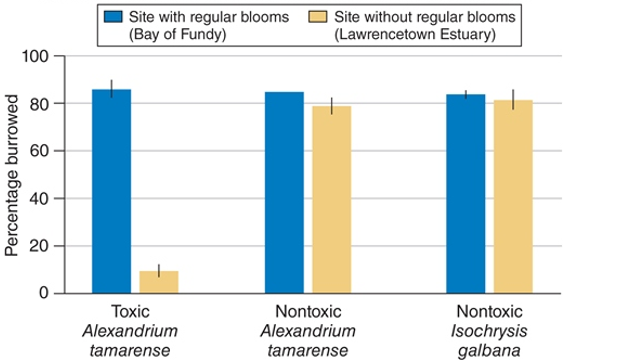A) cerebellum.
B) hypothalamus.
C) medulla oblongata.
D) pons.
E) cerebrum.
G) B) and D)
Correct Answer

verified
Correct Answer
verified
Multiple Choice
The part of the neuron that is usually a single long extension that conducts an impulse to a muscle or another neuron is the
A) synapse.
B) cell body.
C) axon.
D) dendrite.
E) node of Ranvier.
G) A) and D)
Correct Answer

verified
Correct Answer
verified
Multiple Choice
The rounded part of a neuron containing the nucleus and mitochondria is the
A) node of Ranvier.
B) axon.
C) synapse.
D) dendrite.
E) cell body.
G) B) and C)
Correct Answer

verified
Correct Answer
verified
Multiple Choice
Drugs called selective serotonin reuptake inhibitors (SSRIs) block reuptake of serotonin and are used to treat depression.Which of the following would occur in a patient given a SSRI?
A) Serotonin levels would decrease in the synapse.
B) Serotonin levels would increase in the synapse.
C) More serotonin would be released by the neuron.
D) Less serotonin would be released by the neuron.
E) The neuron would switch from serotonin to another neurotransmitter.
G) D) and E)
Correct Answer

verified
Correct Answer
verified
Multiple Choice
The nervous tissue that consists of myelinated axons transmitting information throughout the central nervous system is the
A) white corpuscles.
B) grey matter.
C) red corpuscles.
D) red matter.
E) white matter.
G) A) and B)
Correct Answer

verified
Correct Answer
verified
Multiple Choice
In myelinated axons,_____ ions can diffuse _____ the axon only at nodes of Ranvier.
A) potassium; into
B) sodium; into
C) sodium; out of
D) All of the answer choices are correct.
F) None of the above
Correct Answer

verified
Correct Answer
verified
True/False
Saxitoxin is produced by dinoflagellates.
B) False
Correct Answer

verified
Correct Answer
verified
Multiple Choice
The layered membranes that jacket the central nervous system are the
A) grey matter.
B) meninges.
C) white matter.
D) epidermis.
E) myelin sheaths.
G) None of the above
Correct Answer

verified
Correct Answer
verified
True/False
Neurotransmitters released from a presynaptic cell must travel across a tiny space called a synaptic cleft.
B) False
Correct Answer

verified
Correct Answer
verified
Multiple Choice
If you read about a drug designed to lead to more release of dopamine from the synaptic terminals of certain brain neurons,you would know that the drug was designed to fix synaptic function and thus cure
A) epilepsy.
B) insomnia.
C) Alzheimer disease.
D) Huntington disease.
E) Parkinson disease.
G) A) and B)
Correct Answer

verified
Correct Answer
verified
Multiple Choice
Usually nerve impulses travel from one neuron to another by
A) neurotransmitters.
B) action potentials.
C) resting potentials.
D) threshold potentials.
E) nodes of Ranvier.
G) A) and D)
Correct Answer

verified
Correct Answer
verified
Multiple Choice
The cells that detect internal and external conditions are
A) sensors.
B) motivators.
C) effectors.
D) collaborators.
E) axons.
G) C) and E)
Correct Answer

verified
Correct Answer
verified
Multiple Choice
A nerve impulse travels about __________ times faster when it leaps between nodes of Ranvier than when it travels along an unmyelinated axon.
A) 5
B) 10
C) 20
D) 100
E) 50
G) A) and C)
Correct Answer

verified
Correct Answer
verified
Multiple Choice
Figuer:  -In the figure,which of the following was the dependent variable?
-In the figure,which of the following was the dependent variable?
A) concentration of saxitoxin fed to the clams
B) rate of Na+ flow across the membrane of the clam neuron
C) ability of clams to burrow
D) location from which the clams were isolated
E) species of algae fed to the clams
G) A) and C)
Correct Answer

verified
Correct Answer
verified
Multiple Choice
Which of the following best describes how a neuron fires?
A) Na+ ions cross the plasma membrane, initiating a wave that travels down the axon.
B) Vesicles carry neurotransmitters from the nucleus to the other end of the neuron.
C) Na+ ions enter one end of the neuron and diffuse to the other end, down the axon.
D) Neurotransmitters enter one end of the neuron and diffuse to the other end, down the axon.
E) Neurotransmitters cross the plasma membrane, creating a wave that travels down the axon.
G) A) and D)
Correct Answer

verified
Correct Answer
verified
Multiple Choice
In a spinal cord injury,nerve signals cannot proceed past the location of the injury.A person who is paraplegic can move their head,arm,neck,and hands,but not their abdomen or legs.Which part of their spinal cord was damaged?
A) thoracic
B) cervical
C) lumbar
D) sacral
E) coccyx
G) D) and E)
Correct Answer

verified
Correct Answer
verified
Multiple Choice
In a neuron at rest,
A) active transport is not occurring.
B) sodium ions are more concentrated inside the cell than outside.
C) very little metabolism is taking place.
D) the inside of a neuron is positively charged as compared to the outside.
E) potassium ions are more concentrated inside the cell than outside.
G) A) and C)
Correct Answer

verified
Correct Answer
verified
True/False
The purpose of the nodes of Ranvier is to start nerve impulses.
B) False
Correct Answer

verified
Correct Answer
verified
Multiple Choice
In a spinal cord injury,nerve signals cannot proceed past the location of the injury.A person who is quadriplegic can move their head and neck,but not their arms,abdomen,or legs.Which part of their spinal cord was damaged?
A) thoracic
B) lumbar
C) cervical
D) sacral
E) coccyx
G) A) and B)
Correct Answer

verified
Correct Answer
verified
True/False
The parasympathetic nervous system is responsible for "rest and repose" types of neural activities.
B) False
Correct Answer

verified
Correct Answer
verified
Showing 21 - 40 of 70
Related Exams